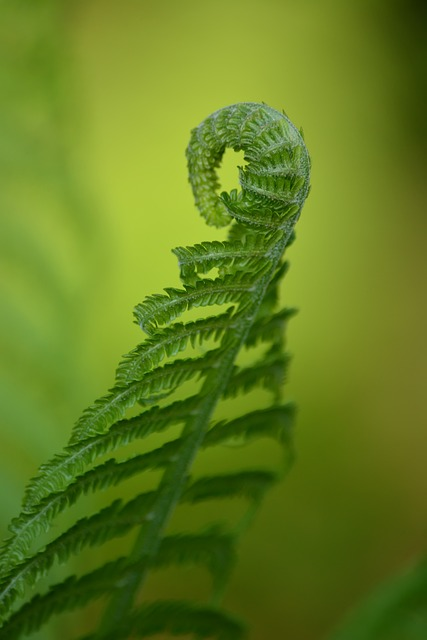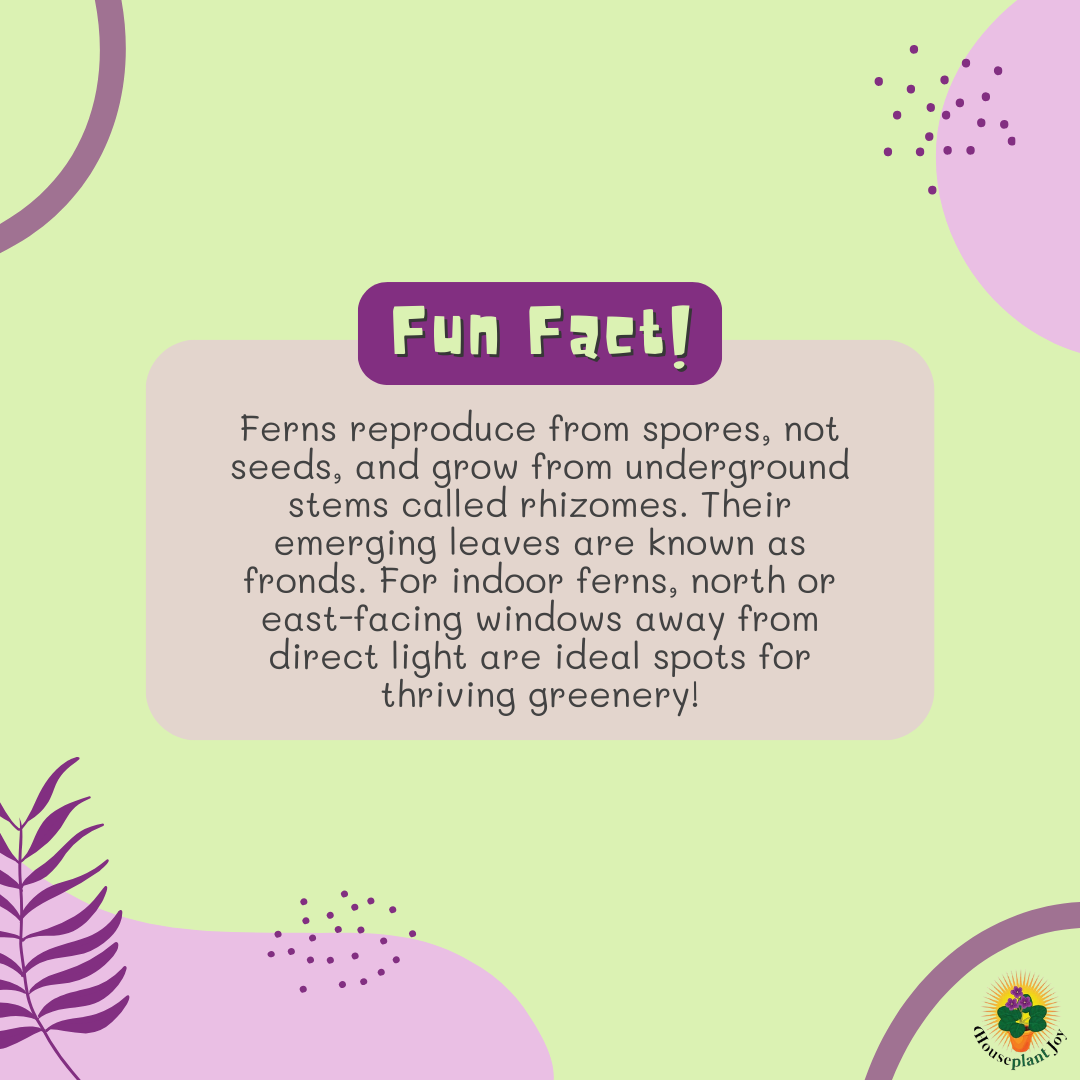HousePlantJoy is supported by our audience. When you purchase through one of our links, we may earn a small affiliate commission. As an Amazon Associate I earn from qualifying purchases. Your cost is not affected.
==================
Embarking on the quest for the perfect fertilizer for indoor ferns can often feel like navigating through a dense jungle of options. The lush, green world of ferns demands specialized care, and finding the ideal fertilizer can be a daunting task.
In this comprehensive guide, we delve into the fertilization wilderness, shedding light on the challenges and offering a roadmap to ensure your ferns indoor thrive. Join us on a journey to unveil the secrets of optimal fern nourishment!
Believe it or not, your fern indoor plants may be silently yearning for the perfect nutrition. Like every other common houseplants, whether it’s indoor plants or grown outdoors, growing ferns require a balanced diet to thrive.. This need is often met by the best fertilizer for indoor ferns. You might wonder, why is fertilizer so essential?
Well, it replenishes the soil’s nutrient content that the ferns consume for their growth and development. Without it, your ferns may suffer from malnutrition, leading to stunted growth, pale leaves, leaf drop, and even death in severe cases.
Understanding the significance of houseplant fertilizers for indoor ferns, including specialized options like fertilizer for Boston ferns, is the first step to ensuring their health and vitality. It’s much like the way you understand that your body needs a balanced diet to function properly. Just as you need different nutrients to grow and stay healthy, so do your indoor ferns.
Understanding Ferns: Basic Care for Indoor Ferns
Before diving into the best fertilizer for ferns, let’s first understand these plants. First and foremost, ferns are different from other houseplants. They are non-flowering plants and belong to a group of vascular plants (plants that have xylem and phloem to transport water and nutrients).
Ferns typically require a calm, humid environment, indirect light, pots with good drainage hole, and well-drained potting soils. Like other plants, ferns photosynthesize but prefer light that is indirect rather than direct sunlight. They also need more humidity compared to other common houseplants.
Why Do Ferns Need Fertilizer?
Ferns, like any other plant, need certain elements to grow. These elements are often found naturally in the soil. However, when ferns are planted indoors, the potting soil’s nutrients can quickly deplete. That’s where the best fertilizer for indoor ferns comes in.
Fertilizer replenishes these lost nutrients and ensures your fern continues growing and flourishing. It provides the necessary elements, such as Nitrogen, Phosphorus, and Potassium (often referred to as NPK), in the proper concentrations.
Discovering the Best Fertilizer for Indoor Ferns
Finding the best fertilizer for ferns requires trial and error. Ferns are generally relaxed regarding their food but appreciate a consistent feeding schedule with a balanced fertilizer.
Choosing a water-soluble, all-purpose houseplant fertilizer, especially one suitable as a fertilizer for Boston fern, is a good rule of thumb. These usually have a balanced ratio of NPK, which is essential for the overall health and growth of the fern. For instance, a 20-20-20 fertilizer (containing 20% each of Nitrogen, Phosphorus, and Potassium) is often a good choice.
What to Feed Ferns: A Look at Fern Food
Remember that they need a balanced diet when it comes to what to feed ferns. This means they need macronutrients (like Nitrogen, Phosphorus, and Potassium) and micronutrients (like Iron, Manganese, and Zinc).
Macronutrients are needed in larger quantities, as they are the building blocks for plant growth. On the other hand, micronutrients are required in smaller amounts, but they are still essential for the plant’s overall health and metabolic processes.
When to Fertilize Ferns: Timing is Key
Knowing when to fertilize ferns is as essential as knowing what to feed them. A general rule of thumb is fertilizing during the growing season, typically from early spring to early fall.
During this period, ferns are actively growing and therefore need more nutrients. Also, this is the best time to fertilize them as it will ensure they have the necessary nutrients to grow and thrive.
How to Apply Fertilizer to Fern Houseplants
Applying fertilizer to fern houseplants can be pretty straightforward. However, it’s essential to remember that less is more. Over-fertilizing can do more harm than good, causing root burn or excessive leggy growth.
Usually, you’ll want to dilute your chosen fertilizer according to the package instructions. With the right amount, water frequently with this solution to your fern. Most ferns prefer consistent moisture on their soil, so try to water them to keep the top inch of the soil moist.
Do Ferns Need Fertilizer? Debunking Common Misconceptions
One common misconception is that ferns don’t need any fertilizer. This is not true. While ferns can survive without fertilizer, they won’t thrive. For a fern to be healthy and robust, it needs a balanced diet like any other plant.
Proper Fertilizer for Individual Plants
Another misconception is that all ferns need the same type of fertilizer. In reality, different kinds of plants may have slightly different nutritional needs. Therefore, it’s always best to research the specific requirements of your particular plant type.
Best Plant Food for Ferns: Commercial vs. Homemade Solutions
Regarding the best plant food for ferns, you have two main options: commercial fertilizers and homemade solutions.
Commercial Fern Fertilizer
Commercial fertilizers are a great option due to their convenience and balanced nutrient content.
Homemade Fertilizer
However, if you prefer a more natural approach, homemade solutions can also be effective. Homemade fern food can be made from everyday household items like coffee grounds, eggshells, and banana peels. These items provide essential nutrients like Nitrogen, Calcium, and Potassium, respectively.
Some of these can be added to your fern plants by sprinkling on top or burying them in the planting soil. This might bring about insect problems, however.
Compost Organic Matter to Make Homemade Fertilizer
Many people enjoy composting their kitchen waste. This provides an excellent option for fern fertilizer indoor or outdoor. By breaking down the waste, your plants enjoy the proper nutrients without the odor and pest problems with the fresh materials.
Feeding Ferns: Regular Maintenance and Care Tips
Feeding your ferns is only part of the battle. Regular maintenance and care are just as essential. This involves ensuring that your ferns have the right light conditions, proper watering, and adequate humidity. Your plant shows healthy new growth when the environmental conditions are correct.
Lighting
Remember, ferns prefer indirect light. So, place them in a north or east-facing window if possible.
Humidity
Fern plants also like high humidity, so the easiest way to consider is placing a tray then add water near them or using a humidifier if your air stays dry. Misting your plants often also provides help.
Water Ferns
Like most foliage plants, tropical ferns also crave more water. Deep watering provides health benefits, including leaf growth, whether in hanging baskets, coco coir, peat moss or on a post. However, make sure that the potting soil mixture allows for good drainage. Avoid also letting your pot sit in a standing water. If not, root rot might damage or kill the plant.
Remove Damaged and Decaying Leaves
Decaying leaves provide the ideal breeding ground for insects and diseases. Remove any damaged leaves as soon as you find them. Any fronds that begin to deteriorate need to be removed. If you compost, add these leaves to your composter. This provides an all-natural way to help fertilize your plants using their fronds.
Our Top Tips and Facts About Fertilizing Indoor Fern Plants:
- Ferns do not need a lot of fertilizer.
A balanced, water-soluble fertilizer diluted to half strength every two weeks during the growing season (spring and summer) is sufficient. Too much fertilizer often causes root burns and damages the entire plant.
- Use a good fertilizer for ferns.
Fern fertilizer needs a nitrogen-phosphorus-potassium (N-P-K) ratio of 3-1-2 or 2-1-2. You can also use an organic fertilizer, such as fish emulsion or compost tea.
- Ferns are susceptible to fertilizer burns.
You should also avoid fertilizing your fern if the soil is dry, as this can damage the roots. Always water before fertilizing ferns.
- When choosing a fertilizer for your indoor fern, always select one that is specifically for ferns.
This will help ensure your fern gets the nutrients it needs to thrive.
- Water your fern thoroughly before fertilizing.
This will help the fertilizer to be absorbed by the roots and reduce the risk of fertilizer burn.
- Fertilize every two weeks during the season of growing.
This will help your fern to grow and thrive.
- Avoid fertilizing if the soil is dry.
This can damage the roots and prevent the fern from absorbing the fertilizer.
- Stop fertilizing in the fall and winter.
Ferns only need a little fertilizer during the colder or winter months.
- Slow Release Fertilizer.
You can use a slow-release fertilizer, which will release nutrients over time. This is a good option if you need to remember to fertilize regularly. Fertilizer spikes is one of its type.
- Foliar Fertilizer.
You can also use a foliar fertilizer, which is sprayed on the leaves of the fern. This is an excellent way to get nutrients to the leaves quickly.
Your Path to Healthy, Flourishing Ferns
Finding the best fertilizer for indoor ferns is the first step to ensuring their health and vitality. With the right fertilizer, proper application, and regular care, your ferns will flourish and bring a touch of greenery to your indoor space.
So, explore the world of fern food and find the best fertilizer for your ferns indoors. Remember, a well-fed fern is a happy fern. Happy gardening!
Frequently Asked Questions
What type of fertilizer is best for ferns indoor, and how often should I apply it?
The best fertilizer for indoor ferns is a balanced, water-soluble, liquid fertilizer with a formula like 10-10-10 or 20-20-20. Apply the fertilizer at half strength every 4-6 weeks during the growing season (spring and summer). This ensures that your ferns receive essential nutrients without the risk of over-fertilization.
Can I use regular houseplant fertilizer for my ferns that are indoor, or do they require a specialized liquid houseplant fertilizer?
You can use regular houseplant fertilizer for indoor ferns, provided it has a balanced formulation and is suitable for foliage plants. Ferns generally benefit from a balanced mix of nitrogen, phosphorus, and potassium. If the houseplant fertilizer meets these criteria, it can be suitable for your ferns.
Should I use a slow-release fertilizer for indoor ferns, and how does it differ from liquid fertilizers?
While liquid fertilizers are typically applied more frequently, slow-release fertilizers release nutrients gradually over an extended period. For indoor ferns, either option can work. Liquid fertilizers offer more control over nutrient levels and are applied more regularly, while slow-release fertilizers require less frequent applications. Choose the one that aligns with your preferred fertilization routine and monitor your ferns for any signs of nutrient deficiency.
Are there any signs of over-fertilization, and how can I rectify it if it occurs?
Signs of over-fertilization in ferns may include leaf burn, yellowing, or browning of the fronds. If you notice these symptoms, flush the soil with water to help remove excess salts and nutrients. Adjust your fertilization schedule and dilute the fertilizer to prevent further issues. It’s essential to follow recommended application rates to avoid over-fertilization.
For ferns that are indoors, can I use organic fertilizers, and what are the advantages of organic options?
Yes, you can use organic fertilizers for indoor ferns. Organic options, such as compost tea or seaweed-based fertilizers, provide a natural and slow-release source of nutrients. They improve soil structure and encourage beneficial microorganisms. While organic fertilizers may have a milder and more gradual effect, they contribute to overall soil health and can be a sustainable choice for indoor fern care.
Follow for Daily Inspiration: Your Source for Engaging Content
Dive into a world of inspiration and connection – for more related topics, follow us on our social media channels! Join our vibrant community to stay in the loop with the latest updates, exclusive content, and behind-the-scenes glimpses.
Connect with us today and let’s share the journey together.














